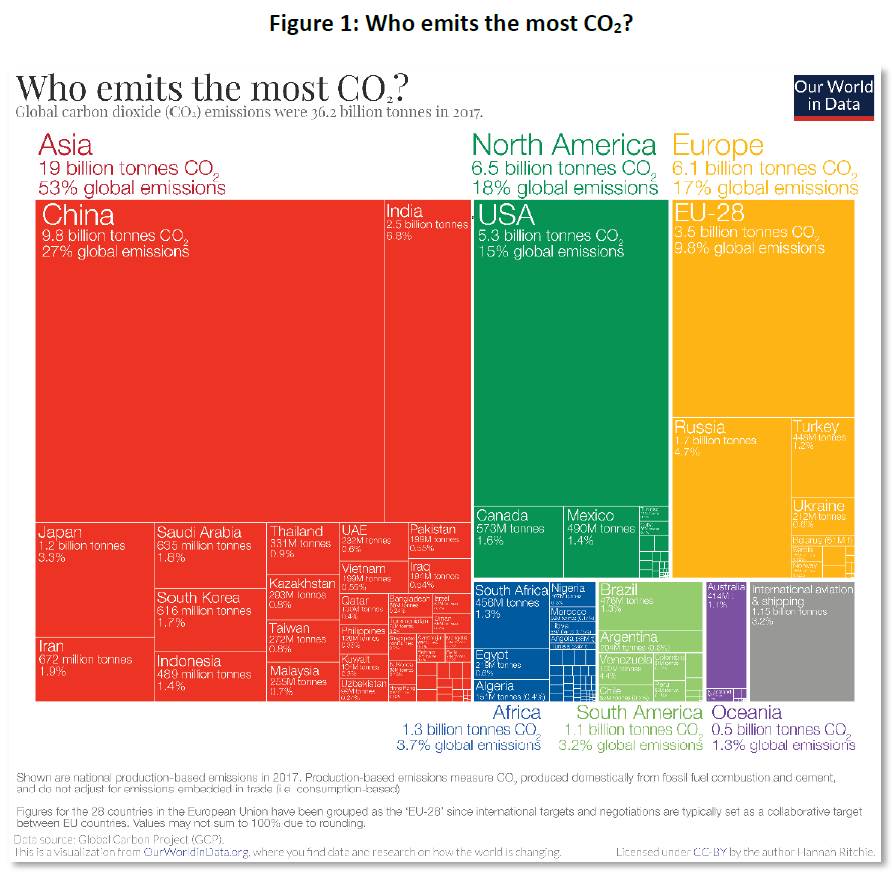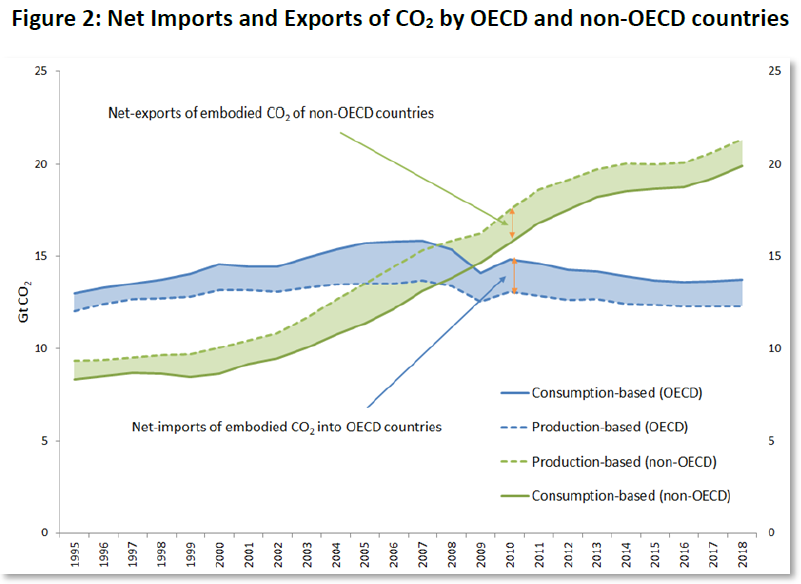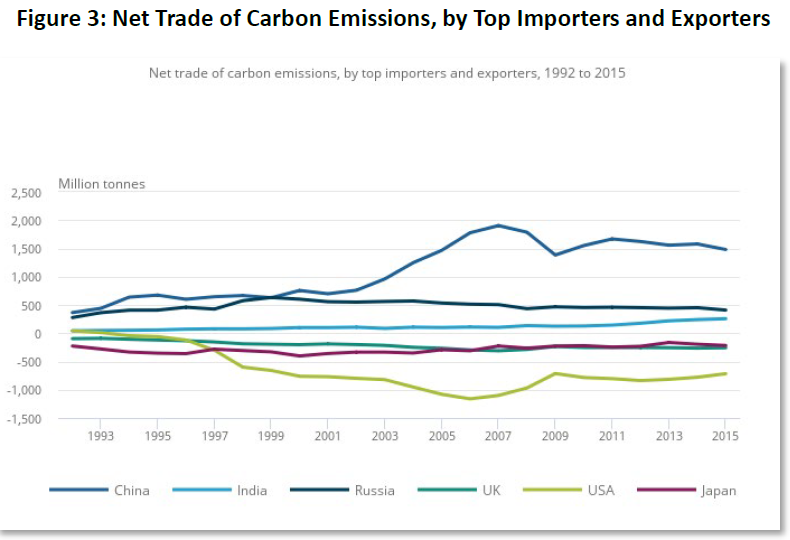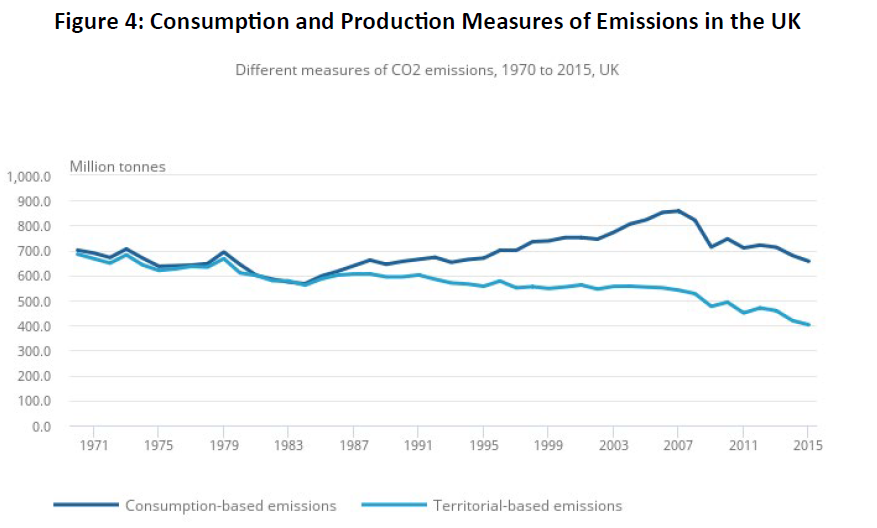
We currently judge a country’s contribution to climate change by assessing its national-level greenhouse gas (GHG) emissions on a production basis. This globally agreed standard is used to determine the emissions reductions required by each country as we journey towards net zero.
However, a production-based view may fail to capture the whole picture. An alternative approach, based on consumption, arguably provides a more complete measure of a country’s contribution to climate change by mapping its total carbon footprint.
So which perspective should risk professionals look at when examining national emissions? This article will discuss these two divergent perspectives and make the case that a clear understanding of both is critical in understanding the shape of the global transition to net zero and the kind of policies that are likely to play a role in getting us there.
A Production-Based View of National Emissions
Calculating national GHG emissions on a production basis, often referred to as a "territorial" approach, involves tallying the emissions produced within a country's borders.
This approach, formalised by the Intergovernmental Panel on Climate Change (IPCC) in 2006 and refined in 2019, is a cornerstone of international reporting on climate change. The outputs generated by this approach are used to assess a country’s progress against its net-zero commitments.
How do you calculate emissions on a production basis?
Whilst the guidance on how to calculate national GHG emissions on a production basis is complex, it can be summarized into the following five steps:
- Collect Data and Identify Relevant Emissions Factors:
- Collect “Activity Data” for all sources of direct GHG emissions: Accurate and comprehensive data needs to be collected to determine how much and how often activities that produce GHG emissions are taking place within national boundaries.
- These include things like the number of miles driven by vehicles in a given year, the amount of electricity generated by power plants, or the number of livestock and their associated feed consumption.
- Note: Emphasis is placed on collecting accurate and comprehensive data from these sources. This can involve direct measurements, statistical extrapolations, surveys, and more.
- Choose an Appropriate Emissions Factor: An emissions factor represents the amount of GHG emitted per unit of activity or input. For example, there is an emissions factor for burning a tonne of coal, driving a mile in a gasoline-powered car, or producing a kilogram of a specific chemical.
- Perform Calculations:
- Core Calculation: Multiply the activity data (how much of something was done, like tonnes of coal burned or miles driven) by the emissions factor (how much GHG is emitted per unit of activity) to get the GHG emissions for each source. GHG Emissions = Activity Data × Emissions Factor
- Aggregate Emissions: Sum up the GHG emissions from all sources to get a total for the entire country.
- Convert to CO2 Equivalents: Since different GHGs vary in their global warming potential (GWP), it is common to convert all emissions to carbon dioxide equivalents (CO2e) for easier comparison and aggregation. This involves multiplying the emissions of each gas by its GWP value, then summing them all up.
- Adjust for Any Carbon Sinks: Some countries might have significant carbon sinks, like large forests, that absorb CO2. These can be subtracted from the total GHG emissions to get a net emissions figure.
- Reporting and Verification: Once the GHG emissions are calculated, they are typically reported to international bodies like the United Nations Framework Convention on Climate Change (UNFCCC). For accuracy and credibility, third-party verification might be undertaken.
- Update Regularly: As technologies, policies, and activities change, the GHG emissions profile of a country can change. It is essential to regularly update the GHG inventory to reflect current conditions.
Country level emissions on a production basis - What does the data show us?
Figure 1 shows recent annual production-based emissions by country and aggregated by region. Several interesting points emerge from this:
- Asia accounts for more than half of global emissions.
- Asia leads North America and Europe as the largest emissions block, accounting for 53% of total global emissions.
- China and the U.S. are the two largest emitters at the national level, accounting for 27% and 15% respectively.
- Africa and South America each account for 3-4% of global emissions, roughly equivalent to international aviation and shipping combined.
- The attribution of emissions from aviation and shipping are contentious due to debates on allocating cross-border emissions (see the grey box in the bottom right of Figure 1).

(Source: Our World in Data)
What does a production-based view of national emissions miss?
Major international climate agreements like the Kyoto Protocol and the Paris Agreement have utilized production-based emissions measures as their basis and there is a good reason for this.
By focusing on only what is produced within a nation’s borders, you address only the emissions under direct control of that reporting national government. This provides the metric with simplicity and clarity, meaning that any discussion of a nation’s emissions is referring only to emissions that their government has influence over. This, in turn, makes the establishment and monitoring of emission regulations somewhat more straightforward. But what does this view miss?
Well, the key aspects of national emissions not considered by this approach are the GHG emissions associated with producing goods and services that are imported from abroad, as well as the emissions from producing goods and services that are then exported. This means that the production-based approach fails to capture the embedded emissions associated with the flow of trade in and out of a country. Given the scale of global trade, this seems like a sizeable omission.
To help us form a clearer picture of this situation, we can turn to a different approach for assessing national emissions, a consumption-based assessment.
A Consumption-Based View of National Emissions
A consumption-based emissions inventory (CBEI) is a calculation of all the greenhouse gas emissions associated with the production, transportation, use, and disposal of products and services consumed by a particular country. In this way, a CBEI can create a comprehensive emissions “footprint” of a country.
At the most basic level, the calculation of a CBEI entails a measure of what is consumed, multiplied by a measure of how many GHG emissions are associated with each unit of consumption. For example, if a community consumes one million tonnes of cement, and producing and transporting each tonne of cement released 1 tonne of CO2, the community’s CBEI would include 1 million tonnes CO2 associated with cement consumption.
Importantly, this would be the case regardless of whether that cement was produced inside or outside the community’s jurisdictional boundaries, and the same basic approach would apply for a unit of any other product or service.
How do you calculate emissions on a consumption basis?
The process for producing a production-based GHG inventory (outlined above), can be adapted into a consumption-based inventory with the addition of two steps.
Begin With Production-Based Emissions: Start by calculating the total GHG emissions produced within the country's borders using the production-based approach, as described previously. Following this, conduct these two additional steps:
- Account for Emissions from Imports:
- Gather data on all goods and services imported by the country. This would also include indirect emissions sources related to the generation of purchased electricity that is imported and then consumed by the country.
- For each imported item, calculate the GHG emissions associated with its entire lifecycle (from raw material extraction to production to transportation).
- Sum up the emissions from all imports and then add this total to the production-based emissions.
- Subtract Emissions from Exports:
- Gather data on all goods and services exported from the country.
- Calculate the GHG emissions associated with the entire lifecycle of each exported item.
- Sum up the emissions from all exports.
- Subtract this total from the ‘production-based emissions plus imports’ calculated in the previous section.
This results in the new calculation of: Consumption-based Emissions = Production-based Emissions + Emissions from Imports – Emissions from Exports
What insights does the consumption-based perspective reveal?
By splitting the world’s economies into OECD and non-OECD countries, an approximation of developed and developing countries, a clear pattern emerges. As Figure 2 shows, the OECD countries (blue) are net-importers of embodied carbon and non-OECD countries (green) are net-exporters.

(Source: OECD)
By looking at this at a country level, we can get a sense of the scale of this gap. Figure 3 captures some of the largest net importers and exporters of CO2 emissions, with exporters being above zero, and importers being below.

(Source: Office for National Statistics, UK)
The U.S. is the largest net importer of CO2 emissions. In 1992, the U.S. had a net import of 43.5 million tonnes of CO2 emissions, which increased to 717 million tonnes by 2015.
China is the biggest net exporter of CO2 emissions. In 1992, China had a net export of 364 million tonnes of CO2. This increased to 1,480 million tonnes by 2015. This demonstrates that while many developed countries have reduced their domestic emissions over recent decades, some of this decrease has been counteracted by rising imports from other countries, such as China.
The UK’s Office for National Statistics (ONS) summarises this trend as follows: “The sudden expansion and globalisation of world economies has resulted in service-focused countries and regions creating indirect emissions through outsourcing of manufacturing products to countries with lower labour costs. Hence, CO2 emissions embodied in international trade have become an essential factor in the measurement of global carbon emission responsibility.”
The UK as a case study in imported emissions growth
The UK is one of the more extreme cases of an economy importing emissions. As Figure 4 shows, on average between 1970 and 1986, consumption-based emissions were only 0.2% higher than production-based emissions.
But after 1986, as the UK economy shifted from a carbon-intensive manufacturing-based economy to a less carbon-intensive services economy, the gap between these measures of emissions widened considerably. At the UK’s consumption-based emissions peak in 2007, 37% of their carbon emissions were imported.

(Source: Office for National Statistics, UK)
While both production and consumption-based emissions have declined since 2008, the UK’s imported emissions have increased as a share of its overall emissions footprint to more than 45%. The implication of this is that even if the UK were to successfully meet its net-zero commitments today, 45% of its overall footprint would remain – approximately 200 million tonnes CO2 annually (WWF).
It also means that whilst production-based emissions have fallen a reported 41% between 1990 and 2016, the fall in consumption-based emissions over the same period is around 15%, a far less impressive figure.
What Is the Best Measure of a Country’s Contribution to Climate Change?
So, what can we take away from this analysis?
Possibly the most important insight is that a production-based view of emissions, whilst a useful and practical metric, clearly misses an important part of the global GHG emissions picture when taken by itself. The comparison with a consumption-based view shows that by failing to account for the embedded emissions associated with the flow of trade in and out of a country, a production-based assessment can produce a skewed account of a country's total impact on the climate.
For developed economies that import significant emissions, the production-based approach is understating these countries overall contribution to climate change. Conversely, for developing economies that export significant emissions, the reverse is true.
Furthermore, by not considering imported emissions in formal climate targets, a country has a perverse incentive to move emissions-intensive production overseas in the pursuit of reaching net zero domestically. And all the while, this will have no impact on total global emissions. Indeed, it might even make things worse if overseas production is less efficient.
Parting thoughts
For practical purposes, it is easier to calculate total global emissions by adding up countries’ emissions that are calculated on a production basis, as this avoids problems of double counting and captures the emissions over which a country’s government has direct control.
With that said, consumption-based measures of emissions arguably provide a more accurate account of a country’s contribution to global emissions and are relevant where considerations of climate justice are concerned. For example, is it fair that developed countries can claim to be ‘net zero’ while still importing significant amounts of emissions? This opens up important questions around what an equitable distribution of the burdens of decarbonisation look like – and clearly these two approaches are going to provide different answers to those questions.
Risk professionals should be aware of the divergence in countries’ production and consumption-based emissions as it may well have a role to play in shaping future policy that will underpin the transition to a net-zero world.
Tim Walton is a Vice President in the GARP Risk Institute specializing in sustainability and climate risk. His work spans research, program management and content production.
Topics: Transition Risk